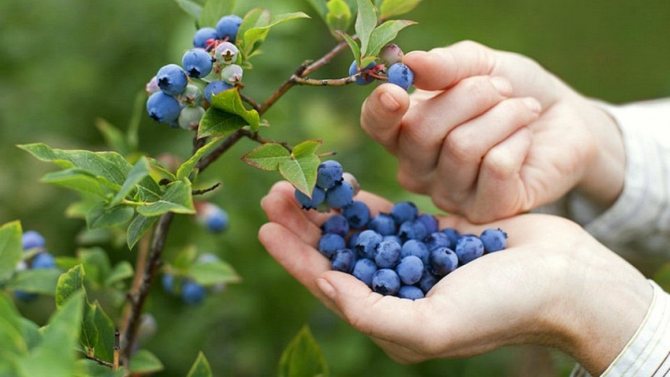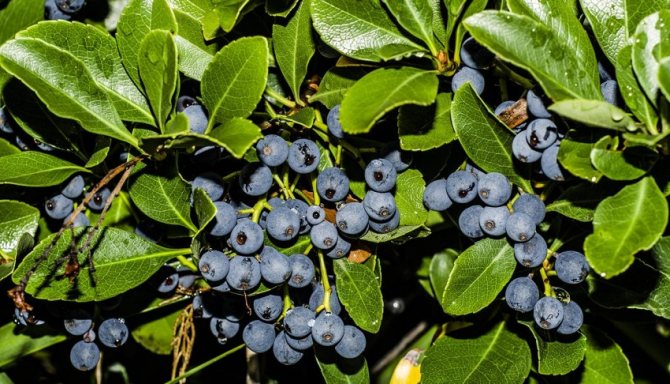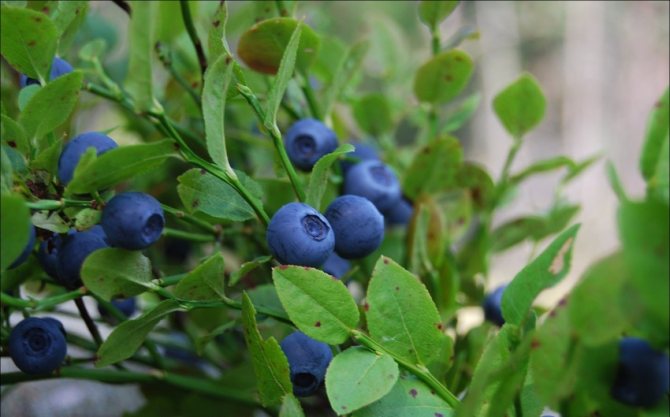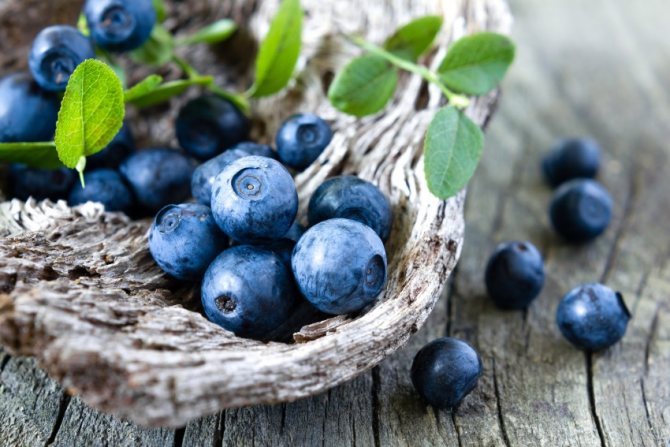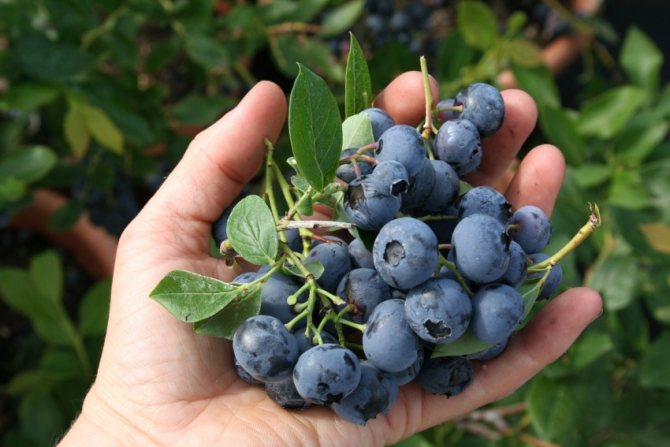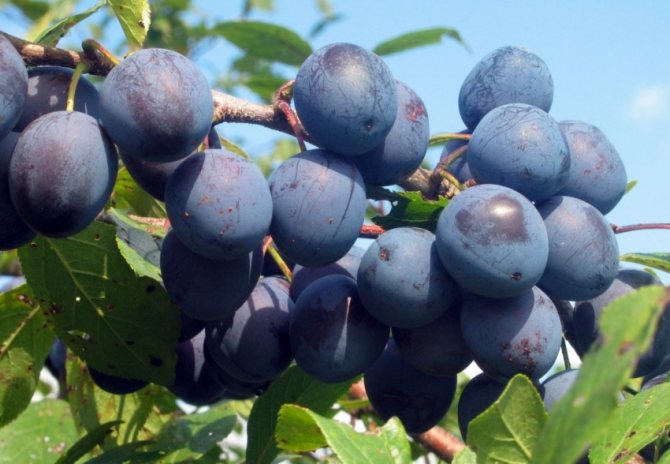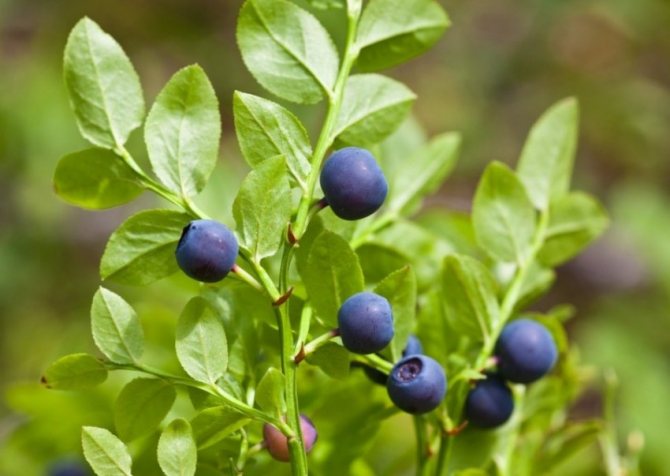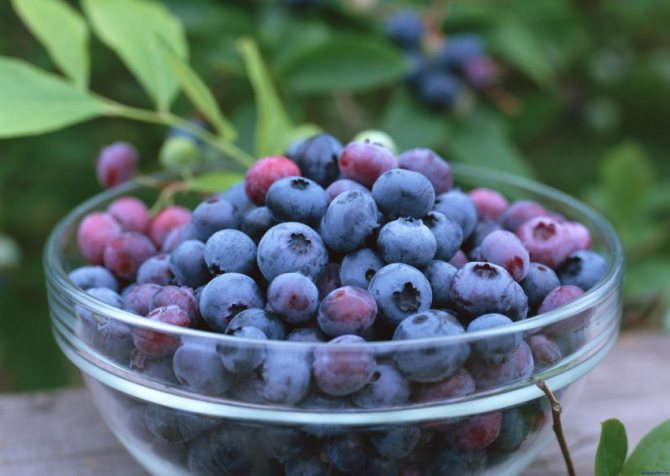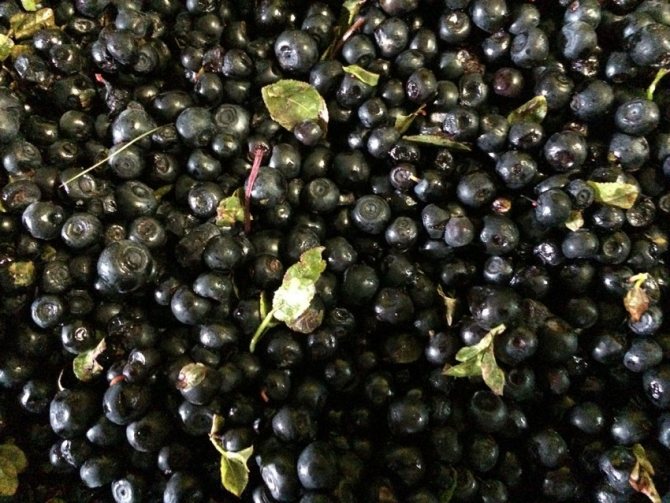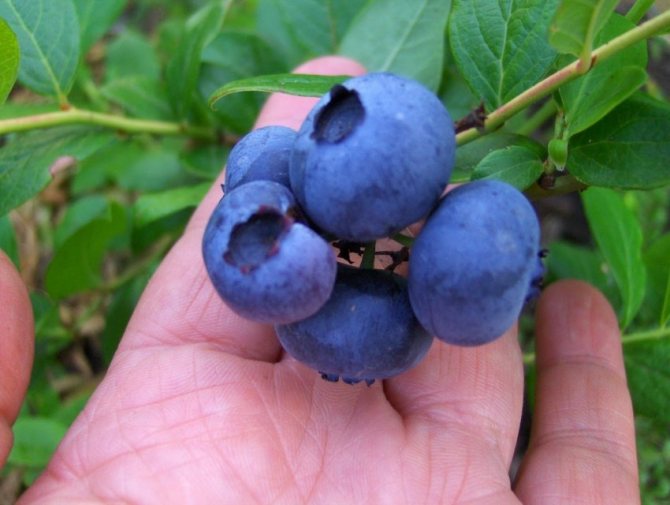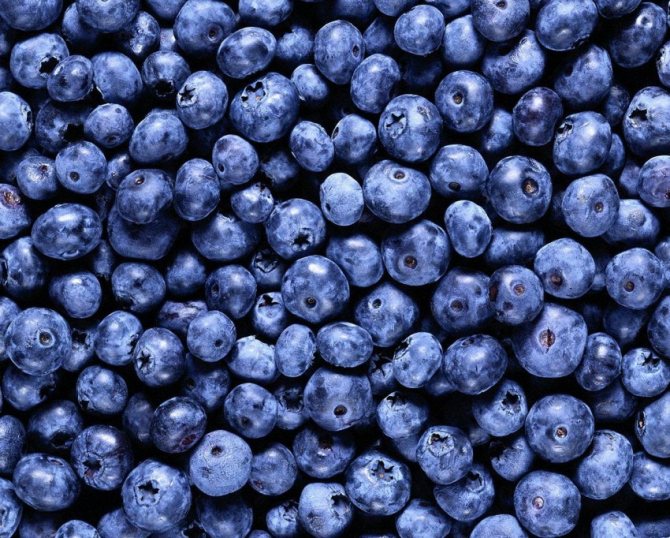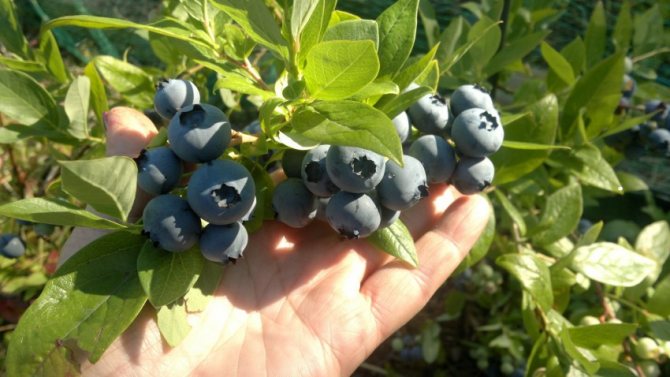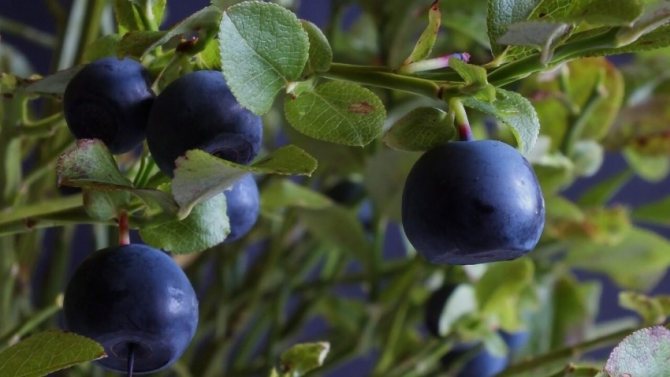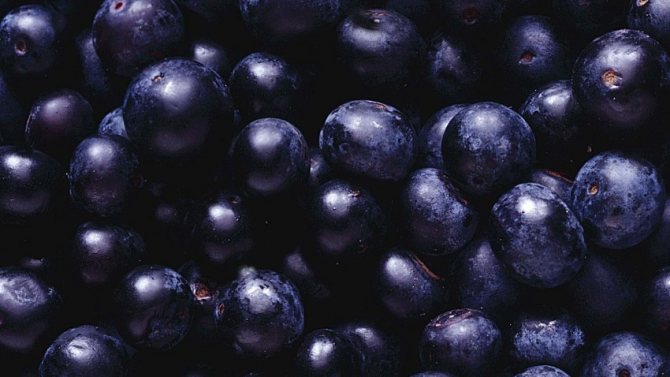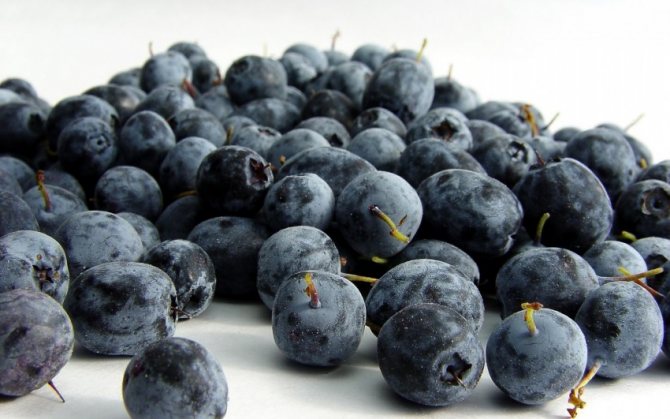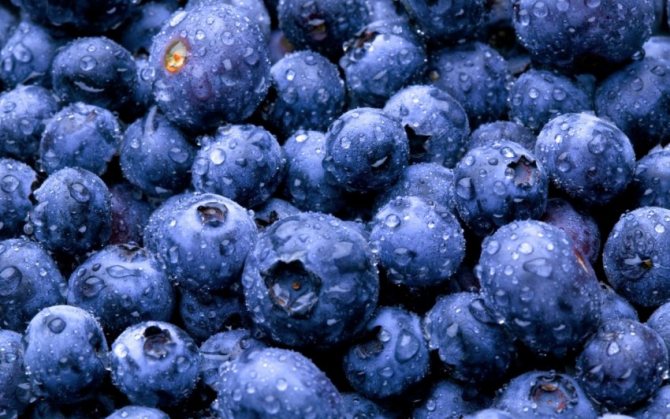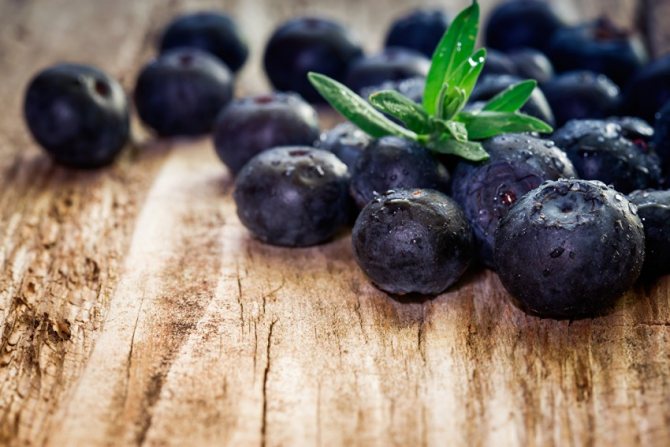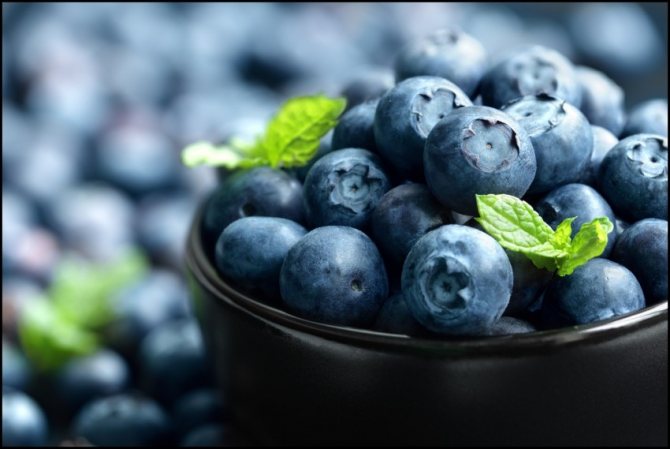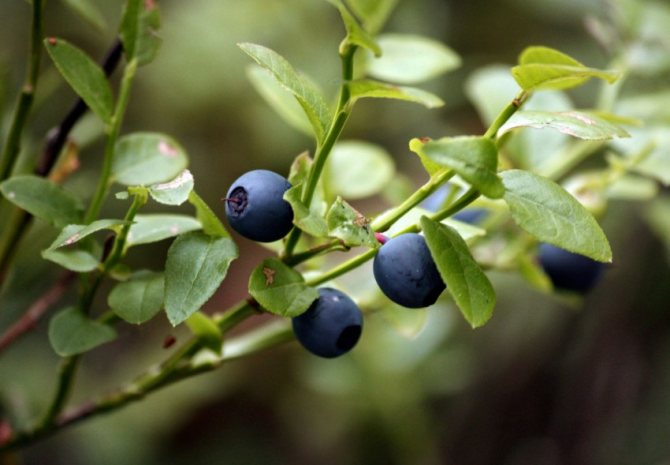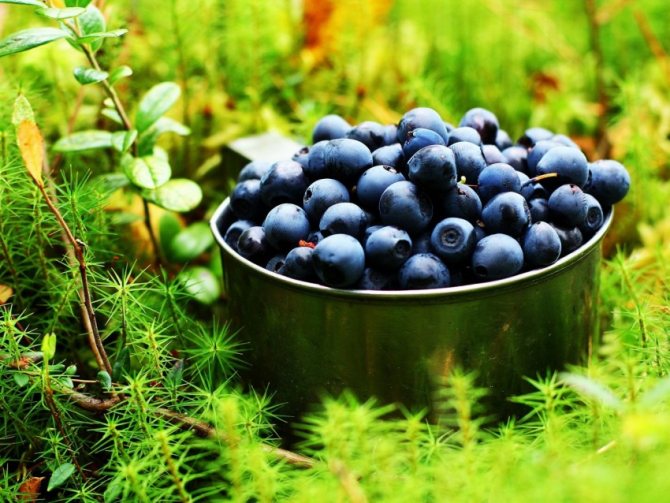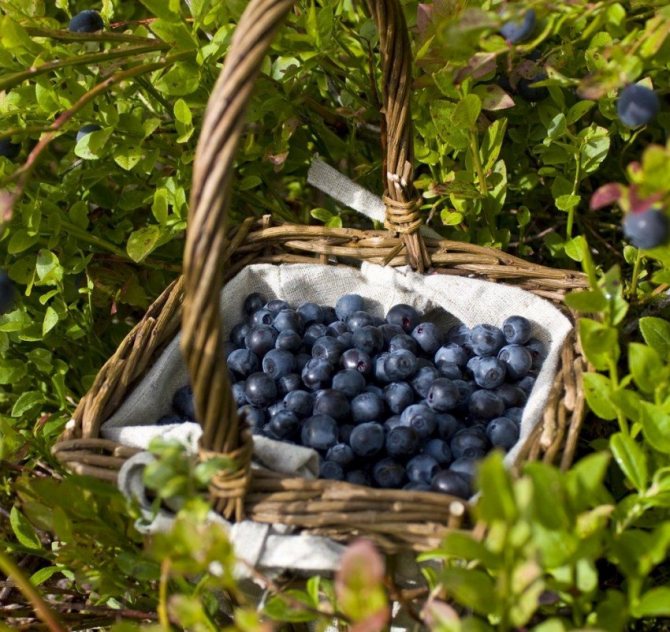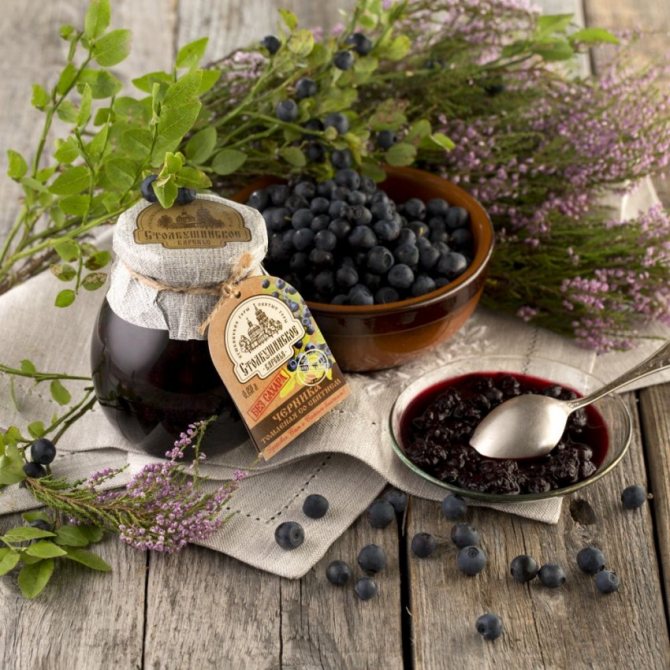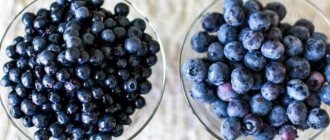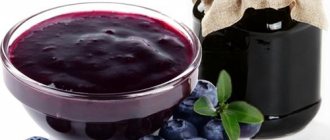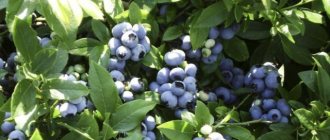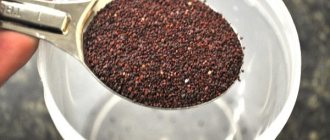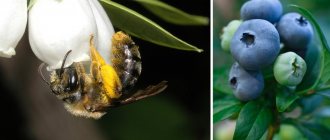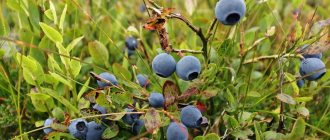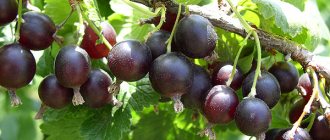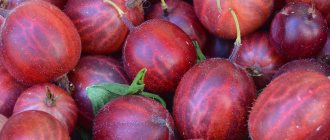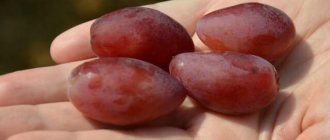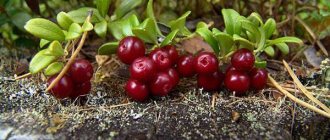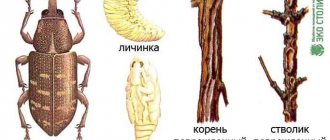Berries
What is the difference between blueberries and blueberries? The first thing I want to compare is the berries, which are of the main interest. The fruits differ in color, size, shape and taste.
Blueberries are smaller, they have a darker color, intense sweetish-sour taste. Blueberries are larger and lighter in color, the fruits are more fleshy and dense, the juice is watery and colorless. The taste is neutral, unexpressed, sourish, but there are sweet berries, a little sugary. The skin of both is covered with a bluish bloom.
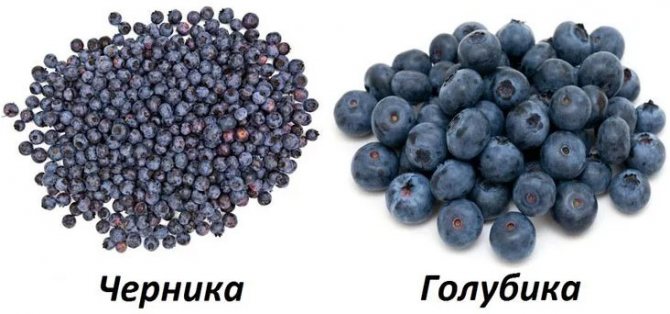
Blueberries do not stain, unlike blueberries, hands and mouths, do not leave dark marks on clothes. Blueberry stains are difficult to wash and wash off.
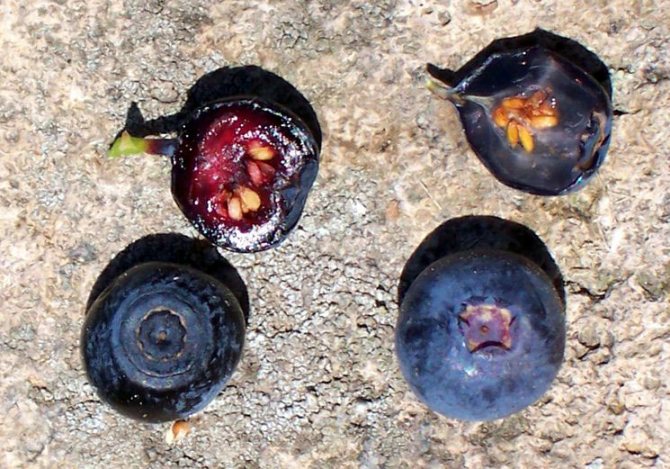

One of the differences between blueberries and blueberries is the color of the juice.
Blueberries are round, dark blue, almost black. Blueberries have elongated, large (up to 12 mm), gray-blue colors.
Blueberries are more high-calorie - 57 kcal / 100 g, blueberries contain only 39 kcal. In terms of the content of vitamins, amino acids, minerals and other substances, the difference between blueberries and blueberries is small.
Advertisement 1
| Substances / 100 g | Blueberry | Blueberry |
| Protein | 1 g | 0.74 g |
| Fats | 0.5 g | 0.33 g |
| Carbohydrates | 8.2 g | 14.49 g |
| Water | 88.2 g | 87 g |
| Cellulose | 1.2 g | 2.4 g |
| Ash | 0.3 g | 0.4 g |
| Vitamin A | 0.29 mg | 3 μg |
| Vitamin B1 | 0.02 mg | 0.037 mg |
| Vitamin C | 16-20 mg | 9.7 mg |
| Vitamin K | 19.3 mcg | 19.3 mcg |
| Vitamin PP | 0.28 mg | 0.42 mg |
The value of culture
Blueberries (all types) can be eaten fresh, and can also be freeze dried, canned and processed into juices and preserves. To taste, marsh blueberries are sweet and sour of various saturations (in wild forms they are sometimes almost tasteless), in tall blueberries - sweet with a slight, subtle sourness, in undersized blueberries - sweet.
Marsh blueberries contain about 6.5% sugars (mainly glucose and fructose, slightly less sucrose) and about 1% organic acids (mainly citric and malic acids). The main medicinal advantage of blueberries is its unique antiallergic properties, and they are especially good at relieving allergies caused by various drugs, which makes it especially valuable for the nutrition of people prone to allergic reactions, including children suffering from diathesis. The juice from these berries, thanks to catechins and tannins, has a mild astringent effect and is useful for indigestion, and a decoction of marsh blueberry leaves, on the contrary, is recommended for constipation.
The chemical composition of tall blueberries is close to that of marsh blueberries, but they contain even more vitamin K and a special substance - betaine, which has pronounced anti-sclerotic properties.
Low-growing blueberry is somewhat inferior to both types in the usefulness of berries, but surpasses them in the sweetness of berries, and is also valued for winter hardiness and greater drought resistance, high productivity and friendly ripening of fruits. The decorative advantages of blueberries, especially of the American species, can also be noted. Tall blueberries look very impressive both during flowering and at the end of summer, when they are covered with ripe fruits, and in autumn, when their leaves turn purple, crimson or bright yellow. Stunted blueberries can be used as a ground cover in alpine and rocky gardens (with good drainage).
For beekeepers, blueberries may be of interest as one of the earliest honey plants.
Where and how they grow
In the wild, both berries are found in regions with a fairly cold and temperate climate. They grow in wetlands and forests.
Blueberry bushes are low (about 40 cm in height), flexible shoots, green, single berries.Usually grow in coniferous forests, under pines and spruces.
Blueberry bushes reach 50 cm, sometimes 100 cm, lignified shoots, berries grow in bunches. They are found in the shade and in open places.
The leaves of blueberries and blueberries are similar, ovoid in shape, about the same size.
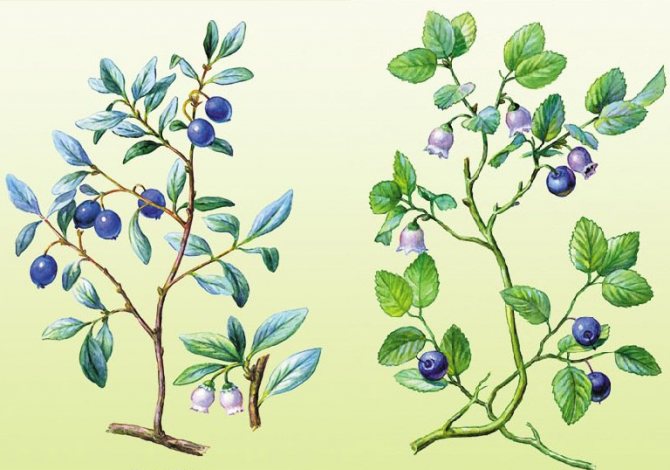

Left - marsh blueberry, right - common blueberry
Other names
In common parlance, blueberries are called blueberries, drunkards, doves, fools, vodnyanka, gonobel, gonobob, gonoboy. It is believed that the name gonobel stands for headache.
This berry received unpleasant epithets undeservedly, thanks to its proximity to the poisonous rosemary. Ledum also belongs to the Heather family and grows in swamps next to blueberries.
The essential oil of wild rosemary settles on the berries of the gonobel, after eating such fruits, people have pain and dizziness, as with a hangover syndrome. This trouble can be avoided by rinsing the berries with running water before eating. And, of course, do not overeat too much blueberry fruits, everything is fine in moderation.
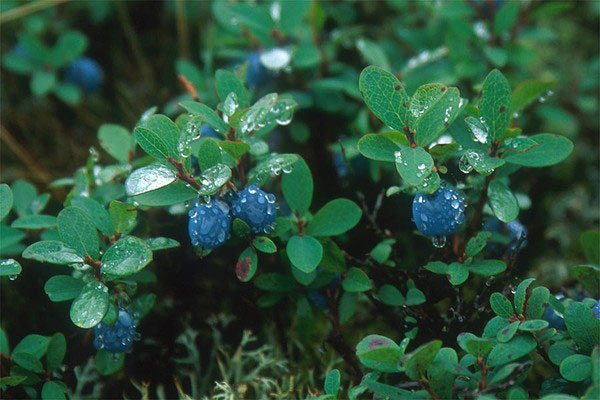

Forest blueberry
Benefits and contraindications
What is healthier - blueberries or blueberries? Differences in composition are insignificant, both berries contain a set of vitamins and other valuable elements, which makes them healthy. Both are used as a remedy.
Blueberry
This berry contains ascorbic acid and antioxidants. Blueberries improve the functioning of the immune system, are a natural antibiotic, and have long been considered very beneficial for the eyes.
In folk medicine, the fruits are used:
- with visual impairment;
- with disorders of the digestive system;
- for the prevention of cardiovascular diseases;
- with anemia;
- for the treatment of burns;
- with an increased level of glucose in the blood;
- with urolithiasis;
- with acute respiratory infections.
You can not eat blueberries for chronic constipation and diseases of the pancreas.
Advertisement 2
Blueberry
Its beneficial properties are that it has antioxidant properties, increases the ability of cells to regenerate, promotes collagen production, and is indispensable in slimming diets.
Blueberries are used:
- to normalize the digestive tract;
- with hypertension;
- to strengthen the heart and blood vessels;
- to accelerate metabolic processes;
- to improve memory and brain function in general;
- to eliminate eye fatigue;
- with anemia.
Important! Blueberries can cause allergies and are therefore not recommended to be overused. In addition, it leads to bowel disorders.
Characteristics of blueberries
Bilberry is a low-growing deciduous forest plant, belongs to the genus Vaccinium, of the Heather family. The height of the shrub is from 10 to 50 cm, in the northern regions it is up to 10-15 cm at all. The Russian name "blueberry" comes from the coloring properties of the juice of berries. The stem of the blueberry does not stiffen from the base, but remains green. Blueberries belong to the category of creeping plants.
The root system of the plant is creeping, with a main main root. Additional shrubs grow from the main root and thus new shrubs grow from them. Flowering begins in May. Blueberry flowers are white with a greenish tinge, often tilted downward to protect them from forest dampness. Blueberries are pollinated by insects, most often those that collect nectar.
Blueberry leaves are arranged alternately on the stem. They are small in size, oval in shape, with a small groove in the middle. The moisture that collects on the leaves rolls along the grooves along the stems to the root system, making the plant insured against drying out. The leaves, along with the berries, have a very important medicinal value.
Blueberry fruit is a dark blue, black berry with a bluish bloom, which has about a couple of dozen seeds inside.Blueberries can spread quickly due to birds eating their berries and spreading indigestible seeds elsewhere. Blueberries ripen unevenly from June to August. At this time, forest blueberries become an integral object of fishing for many enterprising summer residents, who collect them for sale in the markets, and delivery to procurement points. The beneficial properties of blueberries can be enumerated for a long time. Due to the fact that this is a wild-growing forest berry, in the life of which a person does not interfere with his growth stimulants and other chemistry, it has a lot of healing properties. Here are just a few of them:
Maintaining eye health. Carotene, which is found in blueberries, promotes the production of the pigment radopsin, which makes it possible to see well in dim light. The components of blueberry restores the cornea of the eye, promotes cell regeneration, and provides good prevention of cataracts and myopia. Extracts from berries and leaves of blueberries are used for the production of specialized preparations, which are included in the list of mandatory medicines for people suffering from eye problems. Rich source of antioxidants. Vitamin C and other beneficial substances prevent the accumulation of free radicals in the body, neutralize their effect. Natural antioxidants, which blueberries have, slow down the aging of the body, prevent the manifestation of coronary heart disease, atherosclerosis and even cancer. Eating blueberries helps to improve blood circulation. Effective treatment of diabetes mellitus. Unfortunately, humanity has not yet managed to invent a medicine that would help completely cure a person from this insidious disease. But blueberry extracts containing aldose reductase inhibitors can significantly alleviate type 2 diabetes. In addition, berries and leaves are used to treat early stage diabetes. For people with an increased risk of diabetes, even with a completely healthy body, it will not be superfluous to consume blueberries in their pure form, in the form of infusions and teas, as well as vitamin supplements. Promotes weight loss. Blueberries are a dietary product that not only improves metabolism, but also removes toxins and toxins from the body. It should be remembered that maximum efficiency can be achieved only when the berries are consumed fresh or quick-frozen, without the addition of other berries and fruits. Prevention of cardiovascular diseases. The incomparable antioxidant potential of this plant normalizes blood cholesterol levels and blood pressure, improves vascular health. Normalizes the digestive system. Blueberries are very helpful for diarrhea, indigestion, dysbiosis, inflammation of the gastric mucosa, hemorrhoids, liver dysfunction. In addition, blueberries have strong antimicrobial properties, preventing the action of pathogens such as staphylococcus, salmonella, helicobacteria and others on the body.
The growing area of blueberries is concentrated in the European territory of Russia and practically throughout the forest zone of Ukraine. Bilberry prefers acidic peat soils, coniferous forest edges and swampy areas. But since a person was never stopped by difficulties on the way to achieving a goal, he will make his way to the very depths of the forest to collect the desired berry. At the same time, it is important to remember the necessary precautions, namely, to wear rubberized shoes with a high bootleg, tight trousers and a jacket, and a hat. Vipers often live under blueberry bushes, and you can easily make friends with a tick in the forest.
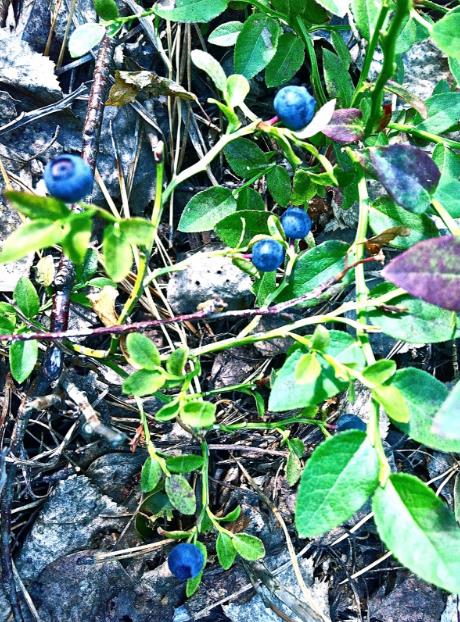

Growing
These shrubs take root in the garden in different ways. It is very difficult for blueberries to create the necessary conditions.Both blueberries and blueberries should be grown in an open area or in partial shade, on acidic soils, with drainage in the holes.
Blueberry
This berry does not belong to cultivated plants for domestic and industrial cultivation.
It is rarely cultivated in garden plots. For her, you need to create conditions as close as possible to natural. You need to choose a place that should be in partial shade, you can also choose a sunny area.
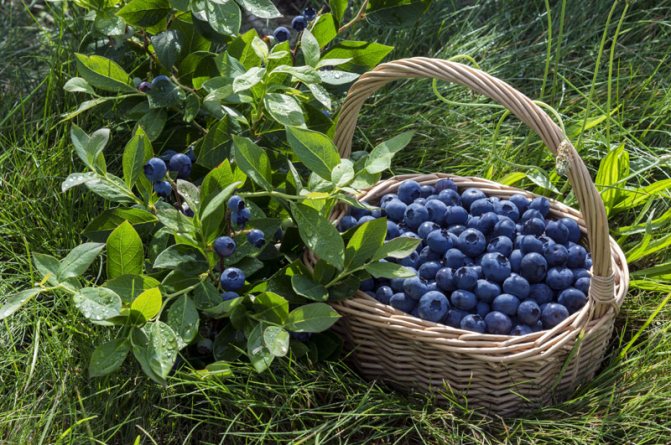

Blueberries are rarely grown in plots, but they can be harvested in the forest.
Dig up the soil to a depth of 60 cm. Add oak leaves, sulfur, pine needles to the soil.
The diameter of the hole is 50-60 cm, the depth is 50 cm. Put crushed peat mixed with earth into the hole. The distance between the pits is 1.5 m.
Saplings need to be dug in the forest. These should be young, low bushes. Mature ones are also suitable, which will need to be shortened after planting.
Another option is to grow seedlings from seeds. Ripe berries need to be kneaded in a suitable container, filled with water. Remove whatever settles to the bottom, place the seeds on a cloth and dry. Plant them in a mixture of peat and sand, tighten with foil and leave in a lighted place at a temperature of 5-10 degrees. They should rise in a month. After two weeks, they are transplanted into large pots. After a year, it can be transferred to open ground.
When planting on seedlings, there must be an earthen lump. Moisten the edges of the roots with water and send to the hole, straighten the roots, cover with earth, tamp, moisten, cover with mulch from needles, maple or oak foliage.
For the development of the bushes, regular watering and feeding with mineral fertilizers without organic matter is required.
Planting blueberries, subject to all the rules, can bear fruit for up to 20 years.
Advertisement 3
Blueberry
This berry is actively grown in garden plots. Special varieties for home cultivation have been developed: Taiga Beauty, Patriot, Blue Ray and others. In the conditions of the Russian climate, early or mid-early varieties are better suited.
The culture loves acidic soils. The diameter of the holes should be made smaller than for blueberries. Before planting, a clod of earth must be destroyed with your hands and the seedlings must be placed in warm water for 20 minutes. Then plant them in the ground.
It is not recommended to add manure or ash to the soil before planting; mineral fertilizers should be added. If necessary, acidify the soil. Watering is moderate, it is produced in the phase of flowering and the formation of ovaries. The soil around the trunk is covered with mulch of peat, needles, oak leaves. If the winter has little snow, the bushes need to be insulated.
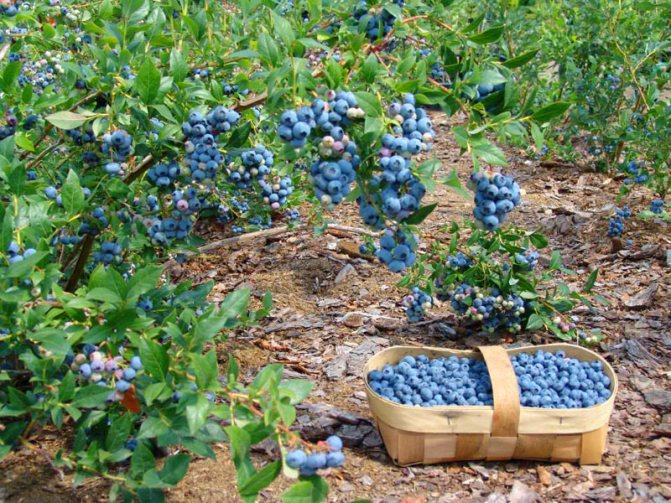

Blueberries grow well in garden plots and produce large yields
Reproduction of garden blueberries by cuttings and shoots (with video)
For propagation of garden blueberries, rhizomes, layering or stem cuttings, rhizome segments, shoots with part of the rhizome and stem cuttings are used.
All types of blueberries can be propagated by cuttings, but the degree of rooting of cuttings is different for different species. It is especially difficult for tall blueberries to take root (in other ways, it practically does not reproduce).
For propagation by lignified cuttings, shoots are harvested in December - March, for propagation by semi-lignified cuttings - during summer dormancy.
Propagation by shoots with part of the rhizome and segments of the rhizome - in this way plants can be rooted. To do this, prepare a garden bed, dig up the soil to a depth of 20 cm and instead pour pure high-moor peat or a mixture of peat with sand, bark or old sawdust. Then the planting material is harvested.
The soil around the old bushes is dug up and all the underground shoots in it are cut off. Then, from the made rhizomes, cut segments up to 20 cm long, always with a bud or shoot. The prepared cuttings are placed in a container of water or watered abundantly and covered with a wet cloth.
On a prepared bed, a shovel makes grooves about 15 cm deep.The furrows are well watered and the prepared rhizome cuttings are laid out in them so that part of the rhizome with a bud or shoot is directed upwards. Then the furrows with the pieces of rhizomes laid in them are covered with earth removed from the furrow and watered again abundantly. Arcs are installed above the bed and covered with covering material.
For propagation by lignified cuttings, annual, well-ripened shoots are harvested. They are tied in bundles and stored either in a refrigerator at 3-5 ° C, or in a cold cellar, or in the snow. In this case, you need to ensure that the shoots do not dry out.
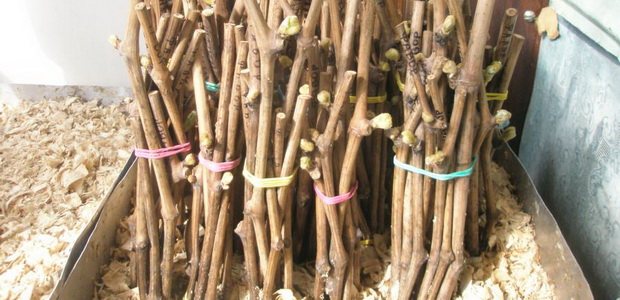

In the spring, cuttings are cut from the harvested shoots. The length of the blueberry shank is 12-15 cm. The lower cut is made oblique, under the kidney, and the upper one is horizontal, 2 cm above the kidney. Then the lower cut of the cutting for rooting is soaked in a solution of "Kornevin" or in a solution of "Heteroauxin" (1 tablet per 5 liters of water) for 12-24 hours. After that, the cuttings are planted on the garden bed according to the scheme 5 × 5, 5x7, 5x10 or 10x10 cm, depending on their size. The garden bed is watered, wire arcs are installed over it and covered with plastic wrap on top, and on top of the film with a covering material to maintain high humidity and shade.
The rooting process takes about 25 days. All this time, the cuttings need to be watered regularly. At the end of August, after rooting, the shelter above the ridges is removed, and young plants are regularly watered and fed. In October, the plants are covered with a 5-7 cm layer of peat or sawdust, and in early November, the beds with plants are covered with covering material. In this form, young seedlings winter. In the spring, when the soil thaws, they are planted for growing.
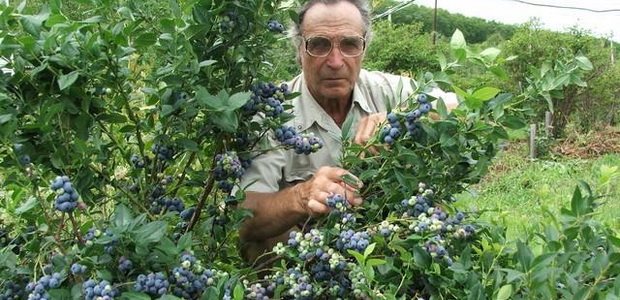

A large blueberry bush can be dug out of the ground and cut in half or 3–4 pieces. Powder the place of the cut with ash, dry it a little and plant the resulting bushes in a permanent place.
Cultivated varieties reproduce only vegetatively, since this method ensures the complete transfer of the varietal characteristics of the mother plant to the new generation.
Check out the video "Reproduction of garden blueberries by cuttings" for a better understanding of how all agricultural practices are performed:
Let's summarize
What is the difference for gardeners is that blueberries have been cultivated for a long time, breeders have bred many varieties and are easier to breed in their summer cottage. Blueberries grow poorly in a garden or vegetable garden and are practically not grown there due to the complexity of the technology. The choice for gardeners is obvious - blueberries.
Both berries are used in cooking. Blueberries have a milder taste, so they are preferable to fresh consumption. For desserts and preparations, it is better to choose blueberries, the taste of which is more intense.
The soil
Representatives of the genus Vaccinum grow only on acidic soils. A characteristic feature of these plants: symbiosis with fungi in the form of mycorrhiza. In nature, the roots of blueberries, as well as cranberries, lingonberries, blueberries, are braided with mushroom threads. The fungus provides the plant with a larger surface for absorption, makes it available for absorption of minerals, mainly phosphorus. In conditions with acidic moist soils, blueberries can form whole thickets.
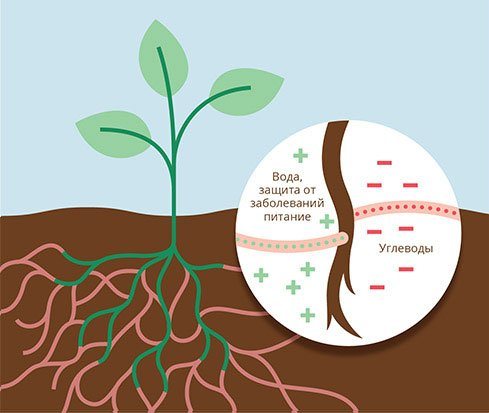

Blueberry mycorrhiza
We connect the taste buds
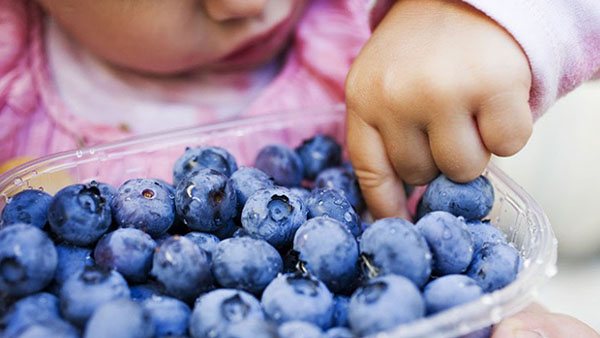

The taste of blueberries depends on the characteristics of the pulp. It has a watery texture. It contains no natural dark blue pigment. This is due to the unusual sourness of the berry, which is in harmony with the light sweetness. Many say that it is somewhat reminiscent of the tandem of currants and lingonberries.
To understand how blueberries taste, you need to try them separately from other foods. It is difficult to accurately and unambiguously describe the received sensations. However, all gourmets agree on one thing - it is sweeter than blue, and also has a rich and pronounced flavor in a special way.
Read also: How to get rid of weeds with folk remedies using vinegar
Depending on how the blueberry tastes, you can understand whether it is ripe or not. If, after eating, you do not feel a sweet aftertaste in your mouth, then it is still green.
Hybrid descendant
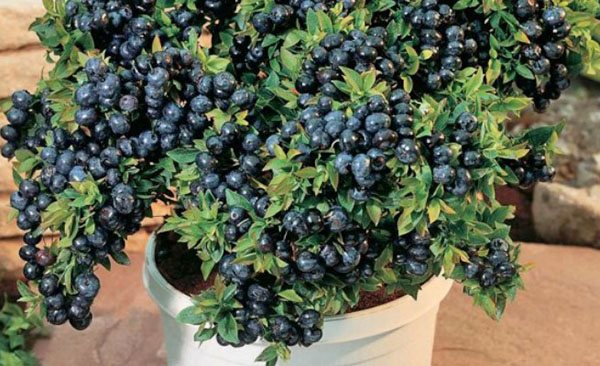

A new round in the history of the existence of two plants is the emergence of an unusual variety - a hybrid of blueberries and blueberries. As a result of crossing these shrubs, breeders received an original dwarf variety, which was eventually named "Top Hut".
Such specimens are successfully grown at home on balconies or verandas. Seedlings are planted in containers or pots, which serves as a wonderful decorative decoration at home. The Top Hut hybrid is particularly resistant to diseases and insect pests.
The culture produces miniature berries weighing up to 4 g. They taste like a gonobel, and smell like a fool.
The difference between blueberries and blueberries is obvious. They are visible in the structure of the bush, leaves and shoots. Berries also differ both externally and internally. The big point of their big difference is the taste: in one it is saturated, and in the other it is watery and sour.
Read also: Lamb: description of the plant and features of cultivation

